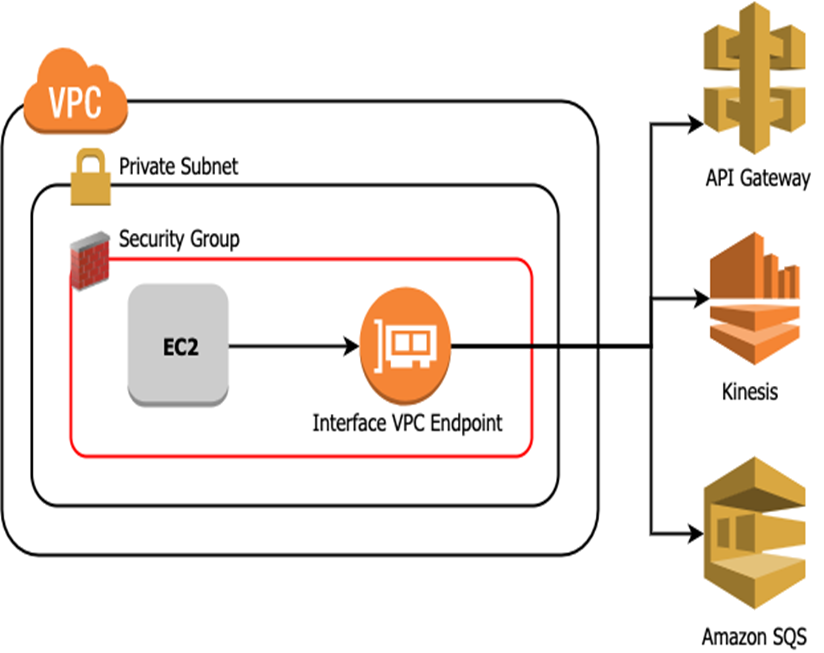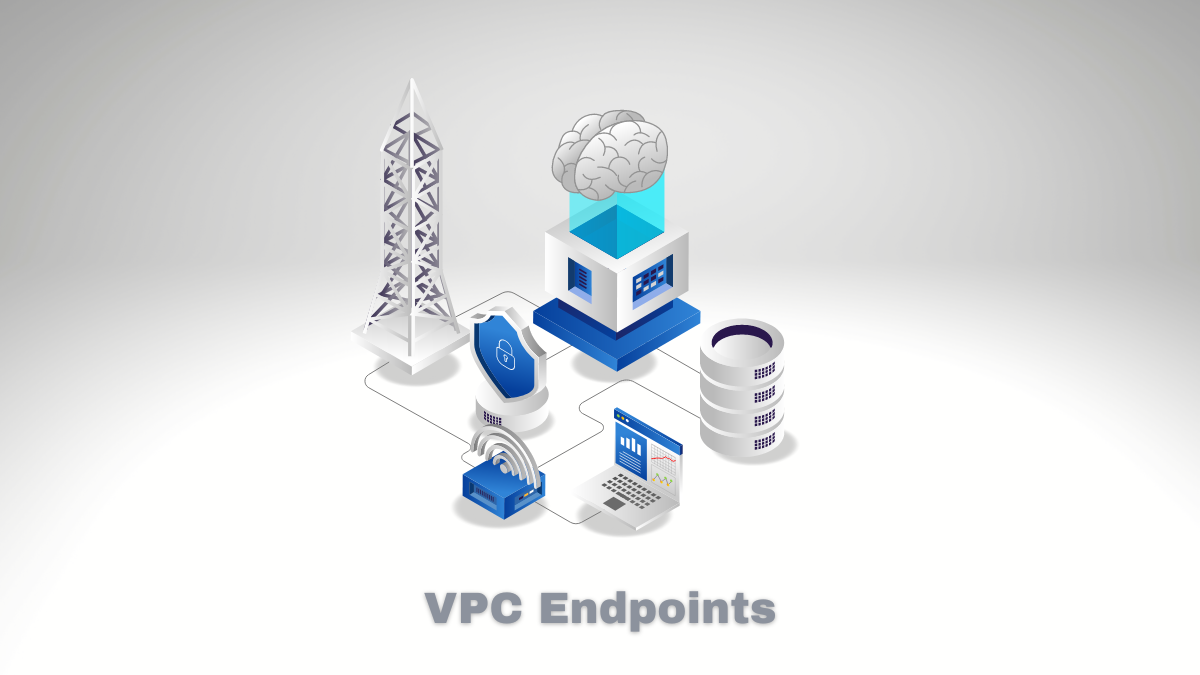AWS VPC Endpoint Pricing: The Ultimate Guide To Saving Money On AWS Networking
When it comes to managing cloud infrastructure, AWS VPC Endpoint Pricing is a crucial aspect you can't afford to overlook. If you're running applications on AWS, understanding how VPC endpoints work and their associated costs can make a huge difference in your budget. So, buckle up because we're diving deep into the world of AWS networking and uncovering hidden gems that could save you serious cash!
Let's face it—cloud computing is all about optimizing resources while keeping costs under control. And if you're using Amazon Web Services (AWS), you probably already know that networking plays a massive role in your overall expenses. That's where VPC endpoints come into play. They allow you to securely connect your VPC to supported AWS services without requiring an internet gateway, NAT device, or VPN connection. But hey, nothing in life—or the cloud—is free, right?
In this article, we'll break down everything you need to know about AWS VPC endpoint pricing. From understanding the basics of VPC endpoints to exploring cost-effective strategies, we've got you covered. Whether you're a seasoned cloud architect or just starting out, this guide will help you navigate the sometimes-confusing world of AWS billing. Ready? Let's go!
Read also:Why You Should Join Wewillwritecom Today Unlock Your Writing Potential
Table of Contents
- What is a VPC Endpoint?
- Types of VPC Endpoints
- AWS VPC Endpoint Pricing Explained
- Breaking Down the Costs
- How to Save Money on VPC Endpoints
- Common Mistakes to Avoid
- Best Practices for Managing VPC Endpoints
- Real-World Case Studies
- FAQs About AWS VPC Endpoint Pricing
- Conclusion and Next Steps
What is a VPC Endpoint?
Before we dive into the pricing details, let's quickly recap what a VPC endpoint actually is. In simple terms, a VPC endpoint allows your Virtual Private Cloud (VPC) to communicate with supported AWS services without going through the public internet. Think of it as a private tunnel that keeps your data secure and fast.
There are two main types of VPC endpoints: Gateway Endpoints and Interface Endpoints. Each type serves a different purpose and comes with its own set of pricing rules. Don't worry—we'll cover these in more detail later. For now, just remember that VPC endpoints are essential for maintaining security and performance in your cloud environment.
Why Use VPC Endpoints?
Here's the deal: VPC endpoints aren't just about saving money. They also enhance security by eliminating the need for public IP addresses and reducing exposure to external threats. Plus, they improve latency since data doesn't have to travel over the internet. So, whether you're running a small startup or a large enterprise, VPC endpoints are a no-brainer for anyone serious about cloud infrastructure.
Types of VPC Endpoints
Now that we've covered the basics, let's talk about the two main types of VPC endpoints and how they differ in terms of functionality and cost. Understanding these differences is key to making informed decisions about your AWS architecture.
Gateway Endpoints
Gateway endpoints are designed for S3 and DynamoDB. They route traffic between your VPC and these services using Amazon's network backbone. The best part? Gateway endpoints don't incur any additional charges beyond standard data transfer fees. Sounds pretty sweet, right?
Interface Endpoints
On the other hand, interface endpoints are more versatile. They support a wide range of AWS services, including Lambda, RDS, and SNS. However, there's a catch: interface endpoints do come with a cost. You'll be charged based on the number of hours your endpoints are running and the amount of data transferred. We'll break this down further in the next section.
Read also:Discover The Enchanting Beauty Of Inka Terra In Stony Point
AWS VPC Endpoint Pricing Explained
Alright, here's the part you've been waiting for: the nitty-gritty of AWS VPC endpoint pricing. Let's start by looking at the two components that make up the cost: endpoint hours and data transfer.
For interface endpoints, AWS charges per hour that the endpoint is active. As of 2023, the rate is around $0.01 per hour per endpoint. That might not seem like much, but if you're running hundreds of endpoints across multiple regions, those costs can add up quickly.
Then there's data transfer. AWS charges for data transferred out of the VPC to the endpoint. Rates vary depending on the region and the amount of data transferred. For example, in the US East (N. Virginia) region, the first 1 GB per month is free, and anything beyond that costs around $0.01 per GB.
Hidden Costs to Watch Out For
While gateway endpoints don't have a direct cost, there are still some indirect expenses to consider. For instance, if you're using S3 or DynamoDB with a gateway endpoint, you'll still be charged for data transfer and API requests. So, it's important to keep an eye on your overall usage patterns to avoid unexpected bills.
Breaking Down the Costs
Let's take a closer look at how VPC endpoint costs stack up in real-world scenarios. Imagine you're running a medium-sized application with the following setup:
- 5 interface endpoints in the US East (N. Virginia) region
- Average data transfer of 10 GB per month
- Endpoints running 24/7
Based on current pricing, here's what you can expect to pay:
- Endpoint hours: 5 endpoints x 730 hours per month x $0.01 = $3.65
- Data transfer: 10 GB x $0.01 = $0.10
- Total monthly cost: $3.75
Of course, your actual costs will depend on your specific use case and region. But this gives you a rough idea of what to expect.
How to Save Money on VPC Endpoints
Now that we understand the costs, let's talk about how to keep them under control. Here are a few tips to help you save money on AWS VPC endpoint pricing:
- Use Gateway Endpoints When Possible: Since gateway endpoints don't incur additional charges, they're a great option for services like S3 and DynamoDB.
- Monitor Usage: Keep an eye on your data transfer and API request patterns to identify areas where you can optimize.
- Terminate Unused Endpoints: If you have endpoints that aren't being used, delete them to avoid unnecessary charges.
- Take Advantage of Free Tiers: Many AWS services offer free tiers that can help reduce your overall costs.
Common Mistakes to Avoid
Even the best-laid plans can go awry if you're not careful. Here are some common mistakes to watch out for when managing VPC endpoints:
- Overprovisioning Endpoints: Creating more endpoints than you need can lead to unnecessary costs.
- Ignoring Data Transfer Fees: Don't forget to factor in data transfer costs when planning your budget.
- Not Monitoring Usage: Failing to track your usage patterns can result in surprise bills at the end of the month.
Best Practices for Managing VPC Endpoints
To get the most out of your VPC endpoints, follow these best practices:
- Plan Ahead: Before deploying endpoints, take the time to plan your architecture and identify which services you'll need to connect to.
- Use Security Groups: Configure security groups to control access to your endpoints and ensure only authorized traffic is allowed.
- Automate Where Possible: Use AWS CloudFormation or Terraform to automate the creation and management of your endpoints.
Real-World Case Studies
To see how VPC endpoints can impact real-world applications, let's look at a couple of case studies:
Case Study 1: E-commerce Platform
A large e-commerce platform used VPC endpoints to connect their VPC to S3 and DynamoDB. By switching from public APIs to gateway endpoints, they were able to reduce their monthly costs by over 30%. Plus, they improved security and reduced latency for their customers.
Case Study 2: Media Streaming Service
A media streaming service implemented interface endpoints to connect their VPC to Lambda and SNS. By carefully monitoring their usage and terminating unused endpoints, they kept their monthly costs under control while maintaining high performance.
FAQs About AWS VPC Endpoint Pricing
Still have questions? Here are some common ones we hear from customers:
- Are gateway endpoints free? Yes, gateway endpoints don't incur any additional charges beyond standard data transfer fees.
- Can I use VPC endpoints with on-premises resources? Yes, you can use AWS Direct Connect or AWS VPN to connect your on-premises resources to your VPC endpoints.
- How do I monitor my VPC endpoint costs? Use AWS Cost Explorer to track your usage and identify areas where you can optimize.
Conclusion and Next Steps
So, there you have it—everything you need to know about AWS VPC endpoint pricing. From understanding the basics to implementing cost-saving strategies, we've covered it all. Remember, managing VPC endpoints is about more than just saving money; it's about ensuring your applications are secure, performant, and scalable.
Now it's your turn. Take what you've learned and apply it to your own AWS environment. And don't forget to share this article with your colleagues or leave a comment below if you have any questions. Together, we can make the cloud a more cost-effective and secure place for everyone!


